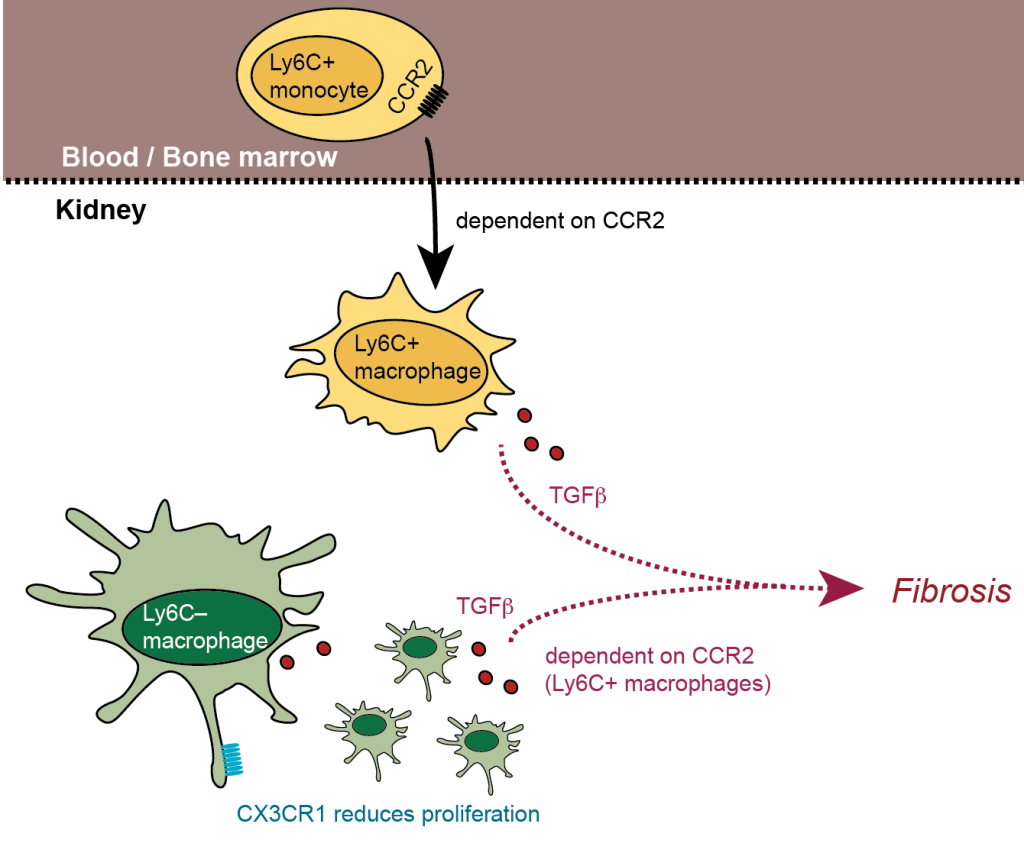Pathogenesis of postoperative Ileus
Localized abdominal surgery can lead to disruption of motility in the entire gastrointestinal tract (postoperative ileus). Intestinal macrophages produce mediators that paralyze myocytes, but it is unclear how the macrophages are activated, especially those in unmanipulated intestinal areas. We have shown already that intestinal surgery activates intestinal CD103(+)CD11b(+) dendritic cells (DCs) to produce interleukin-12 (IL-12). This promotes interferon-γ (IFN-γ) secretion by CCR9(+) memory T helper type 1 (T(H)1) cells which activates the macrophages. These findings indicated that postoperative ileus is a T(H)1 immune-mediated disease and identified potential targets for disease monitoring and therapy.
Age-related macular degeneration
Age-related macular degeneration is the most prevalent cause of blindness in the elderly, and its exsudative subtype critically depends on local production of vascular endothelial growth factor A (VEGF). Mononuclear phagocytes, such as macrophages and microglia cells, can produce VEGF. Their precursors, for example monocytes, can be recruited to sites of inflammation by the chemokine receptor CCR2, and this has been proposed to be important in AMD. To investigate the role of macrophages and CCR2 in AMD, we are studying VEGF production a laser-induced murine model of choroidal neovascularisation. We have identified macrophages as a relevant source of VEGF in laser-induced choroidal neovascularization and suggest the therapeutic efficacy of CCR2-inhibition.
Macrophage-induced Fibrosis
Macrophages in non-lymphoid organs are heterogeneous and specific subsets can be defined. The kidney harbors a dense network of CX3CR1+ macrophages, which directly contributes to innate immunity and might originate from blood monocytes. Nevertheless, the mechanisms that regulate migration and differentiation of these macrophages and their progenitors in homeostasis and inflammation are completely unclear. Renal macrophages depend on the chemokine receptor CCR2 and partially on CX3CR1. We are investigating these cells in the development of renal fibrosis by unilateral ureteral obstruction.


